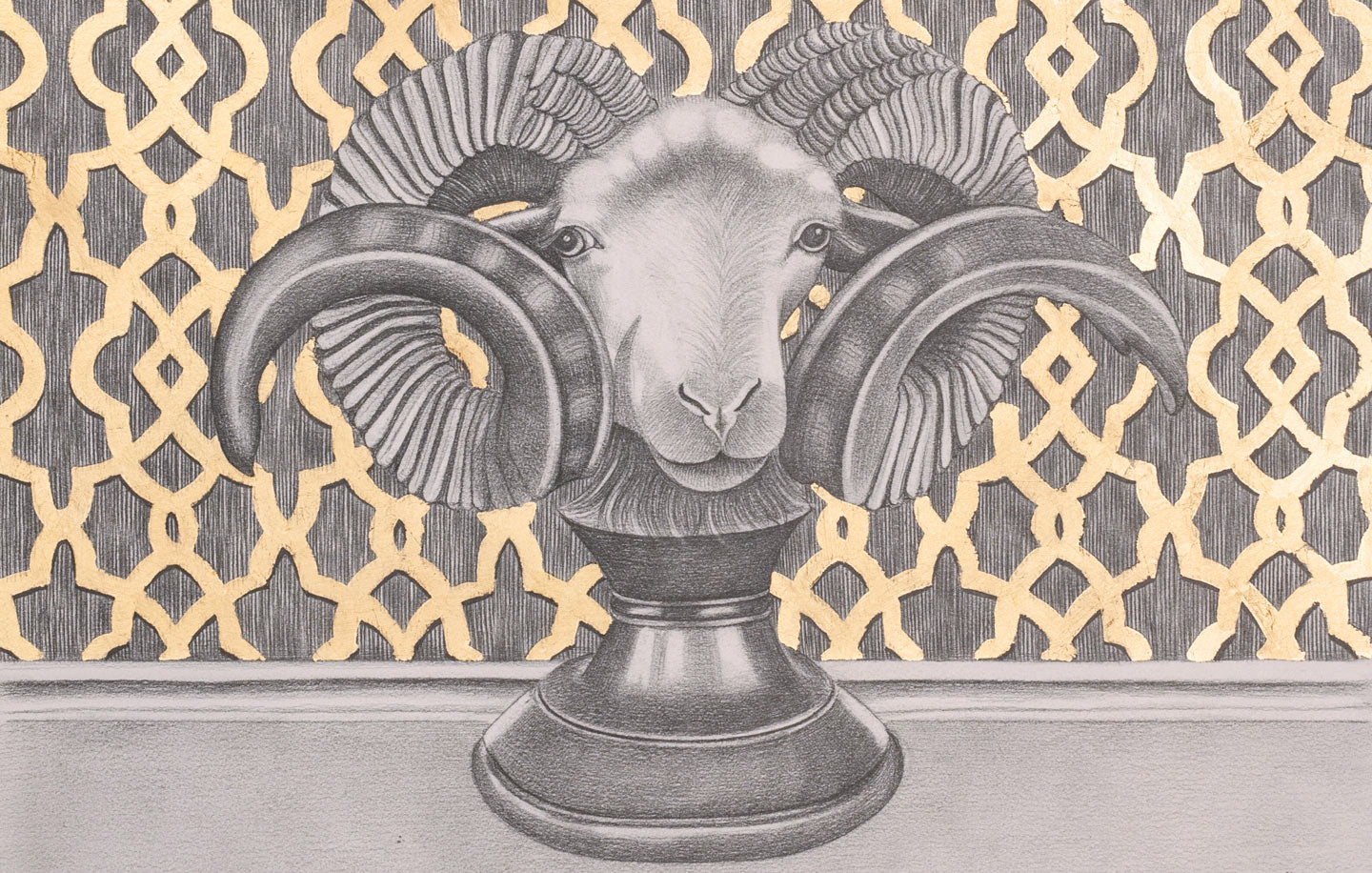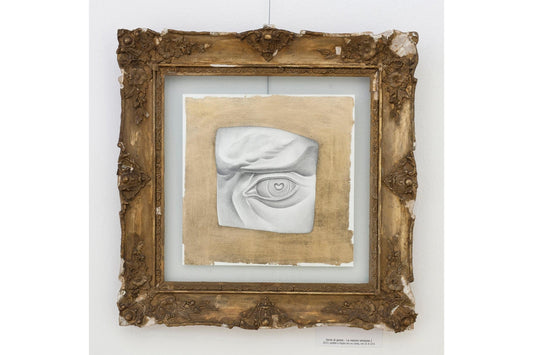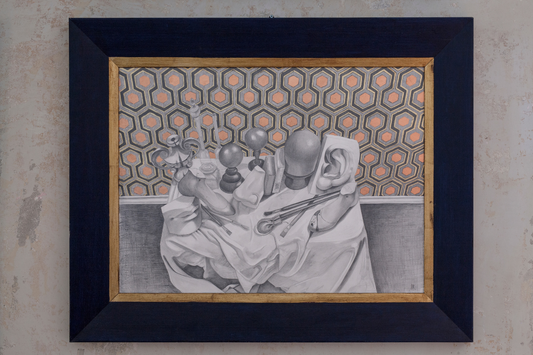What we’re going to explore will be topics like:
- production techniques “stolen” from the world of restoration,
- what are the reasons behind the choice of a specific subject,
- the philosophy behind my works,
- and much more…
So, let’s start this journey by talking about the main element that is the basis of the philosophy of all my works; what I’m talking about is:
The Contrast
Contrast is the basis of everything.For me, an artisan or artistic work must arouse emotions, and what better way to achieve this objective than by using contrast?
The elements I use in my works to achieve a strong sense of contrast that captures the observer’s attention are mainly three:
- the pedestal
- the background
- the materials
In this article, we will analyze the first of these 3 elements, namely the pedestal.
I will tell you the other 2 in more detail in other dedicated articles.
The pedestal: much more than a mere support of the subject
That of the pedestal is an ancient and recurring image in my personal history and is one of the Leit Motives of my work.Since childhood, I remember pedestals of different shapes and sizes scattered around the house or in the various restoration workshops of my mother.
These objects furnished the room with an original and magnetic touch and have always exercised a certain charm on me; even if apparently “useless” I always found them beautiful, elegant, majestic.
Therefore, I decided to propose them again (or rather, they have proposed themselves to me) in my works.
Even though, at first glance, the subjects of my drawings may seem like animals or a female portrait, in most cases, the real protagonist is the pedestal since it places the portrait’s subject in a new light.
While this seems to immobilize and petrify the subjects, it actually makes them more alive than ever.
I find that it ennobles and elevates them, presenting them to the observer from a totally new perspective which is very different from the one we are used to.
Therefore, a subject of everyday life, such as a female portrait or the representation of an animal, presents itself from another point of view: on the pedestal.
Although the purpose of using the pedestal is the same, its function changes according to the type of subject portrayed.
This has a different function on the basis of who it has to support and highlight.
I don’t want to talk to you now about this topic but, if you want to discover the difference of the role played by the pedestal in my female portraits or in the animal portraits, then here below you have the 2 links to the respective articles.
– Click here to read the article dedicated to animals on a pedestal.
– Click here to read the article dedicated to female portraits.
For the moment I will just tell you this (so I won’t leave you empty-handed).
In female portraits, this very powerful object is used to investigate the relationship between the object and the subject and to study the conflict between the identification with one’s own body (imposed with ever more vehemence by today’s society) and the even more urgent need to listen to one’s interiority.

Here the aim is to remove the represented creature from its normal habitat and to put it in the place that would normally belong to a Julius Caesar.
Needless to say, this idea comes from a provocative will that amuses me and, at the same time, fascinates me.

It produces an effect of estrangement, a momentary dismay that allows us to re-examine a subject familiar to us, strengthening it with new meanings.
And with this, I would say that we have sufficiently explored the theme of the pedestal.
If you want to read the other articles that talk about the other tools I use to create this sense of contrast, you will find the links below.
– Click here to read the article “The philosophy behind my works: The Contrast – Part Two”
– Click here to read the article “The philosophy behind my works: The Contrast – Part Three”
Now I’d better go back to sharpening the pencils. See you soon!




